OK, So everywhere we see the ads, mostly on eBay, where Minolta SR lenses (the ones called Auto Rokkor, with ‘W’ for wide or ‘Tele’ added on) are broadly equated to MD-Fit or something similar. Beware! This is not necessarily so! The very early lenses do FIT ON the Minolta Bayonet, but DO NOT STOP DOWN to their minimum aperture. This has physical reasons, which I shall explain.
This means that the first series of these lenses attach correctly (the Minolta bayonet stayed the same until Auto-Focus came along) BUT the lenses only stop down on the later cameras to an aperture of around f8, no matter what you pre-set on the lens. This is due to the placement of the lever inside the cameras and lenses, that are, to put it simply, in different places! From f8 upwards in the direction of ‘more open’ I have found no limits and the restriction does NOT apply to fitting to Digital cameras with adapters that anyway don’t stop down, which is great news.
Take a look why: I have taken shots of an early SR1 (‘b’ series) from 1960 and compared it to the mount on the SRT* (in this case a 303) when the ‘MC’ notation was introduced. Note the placement of the lever at the bottom of the mount, that closes the lens down at exposure.
Firstly here, the back of an SRT/MC/MD Mount lens on the left compared with the early SR (Auto Rokkor without the MC/MD) mount lens on the right. You will note the difference in the placement of the Iris-Lever, although both are stopped down to f22. What you can’t see, is the range of travel of the lever for the lens on the right, which is almost the whole arc as drawn in. compared to the tiddly bit which is obvious in comparison on the left lens (physically limited by the slot it can move in axially – less than half of the arc); on the later Auto Rokkor lenses, from about 1960, the stop-down lever for the iris is the same as for the MC lenses operating from inside a ‘window’ and will work perfectly on later cameras – definitely any camera made after 1961.
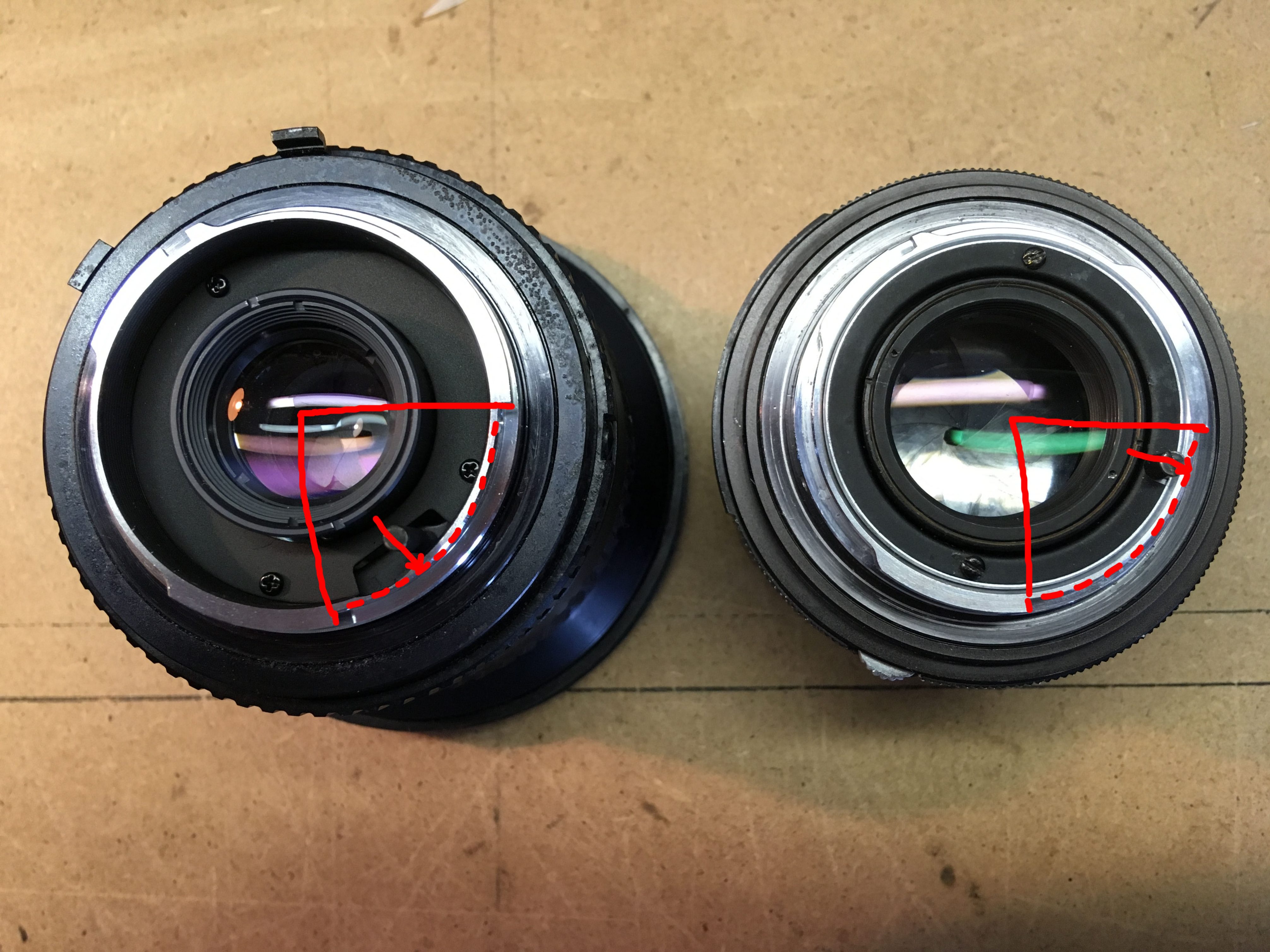
Below the positions of the actuating levers inside the back of the mount on the cameras themselves can be seen. The SRT 303 is representative in its proportions of ALL manual Minolta mounts from then up until the introduction of the Auto Focus mount.
In this picture, the lens would be STOPPED DOWN, on the SRT using the button on the side of the mount and on this early SR (1959) by simply not cocking the shutter – fully automatic diaphragm came in 1961 when both the SR3 and SR1 got the modification. The difference in the position at maximum deflection is pretty obvious.
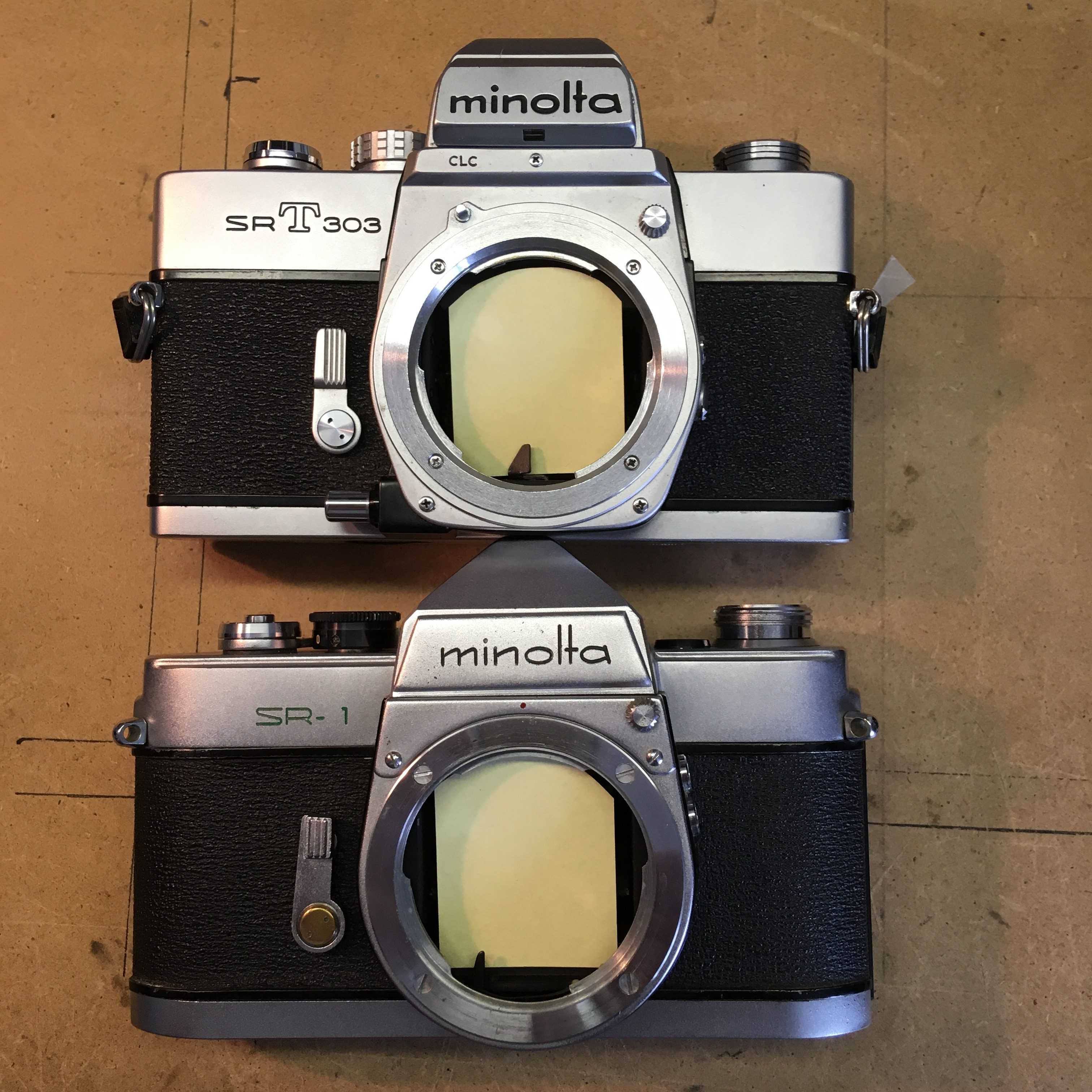
The same two cameras when the aperture is held open: Actually identical.
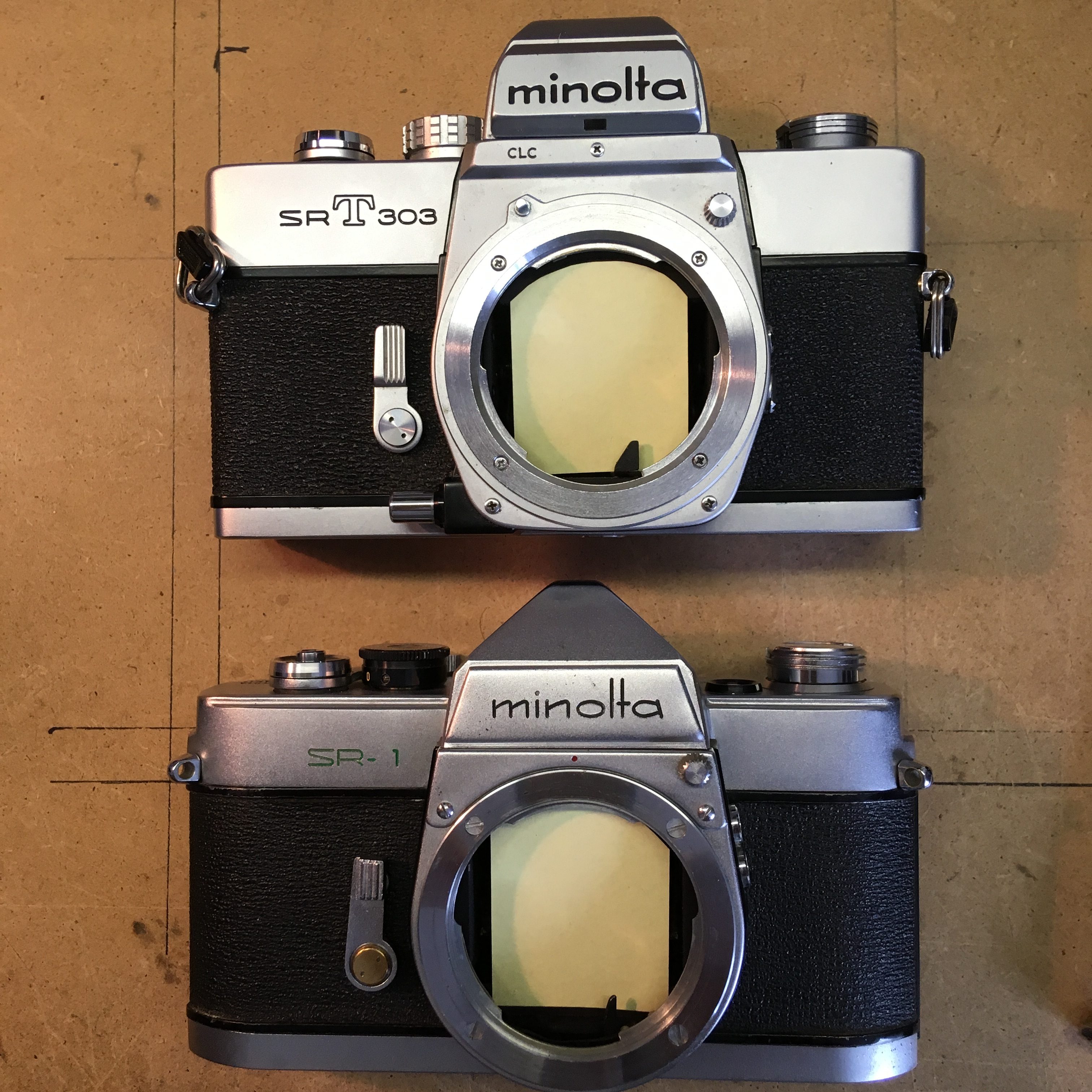
Here we have both cameras with the lens mounted and stopped down to f22. I think the difference speaks for itself. The picture speaks a thousand words?
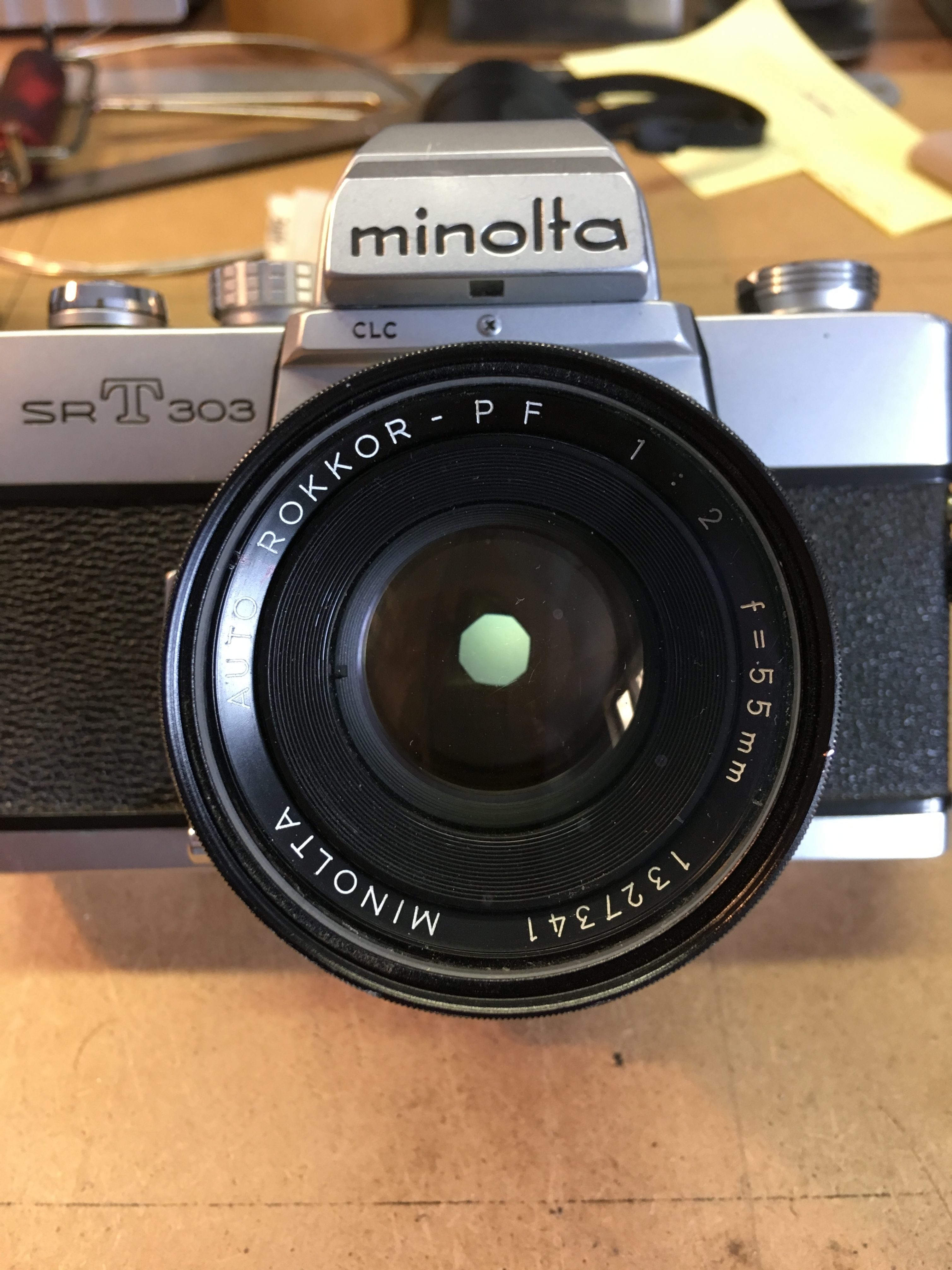
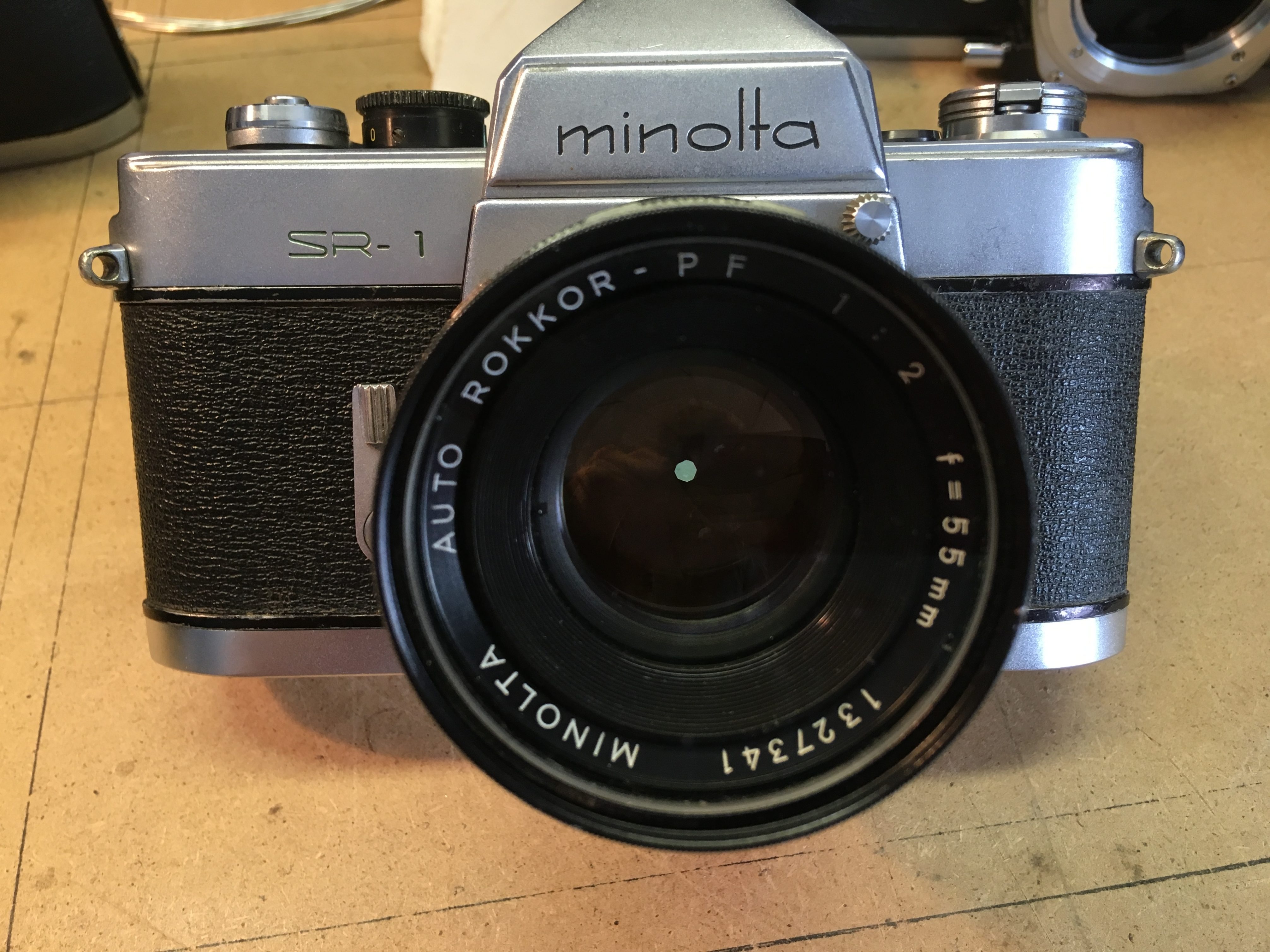
The SRT manages just smaller than f8. This will happen to ALL early Auto Rokkor lenses if mounted on SRT and later cameras (actually any Minolta after at the latest 1961, when the automatic diaphragm was introduced). The other way around, ANY Manual lens will work correctly on the earlier, pre-SRT cameras and of course with any of the Digitals, too – with an adapter.
So, it’s up to you, but buying the earlier lenses, with very few exceptions, is not better than a comparable MC or MD, despite being cheaper (mostly). Quite apart from the mentioned deficit in the usability on later cameras, for the most part the performance and definitely the coatings just doesn’t make it worthwhile – unless you have the very much earlier cameras! The thing to look out for to positively identify the first series of lenses is the flat ring on the back of the lens without the ‘window’ for the iris-coupling, as clearly shown in the pictures above. Another indicator, if not definitive, is the aperture-ring with the engraved yellow ‘LV’ values below the f-numbers. Some, however, even with these engravings also had the later mechanism 🙂 The thing to look for is the evenness of the aperture engravings (if they look ‘wonky’ then they probably have the long travel) and the back of the lens, of course. If the pin sticks out of a narrow window, then you are fine. Watch out for lenses over 100mm, they might be long-travel AND have a window for the pin: the length of the window will give it away.
The SR-2 and both ‘a’ (first series with ‘lift-up’ shutter-speed dial) and ‘b’ versions of the SR-1 without the meter block all have the long-travel lever, but in 1960 alongside the introduction of the SR-3, there was also a ‘plain’ SR-1 (‘c’) without the block, but with the automatic diaphragm…